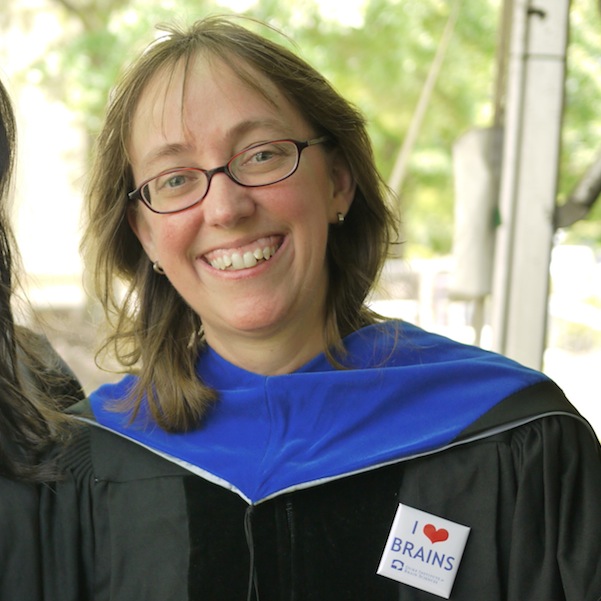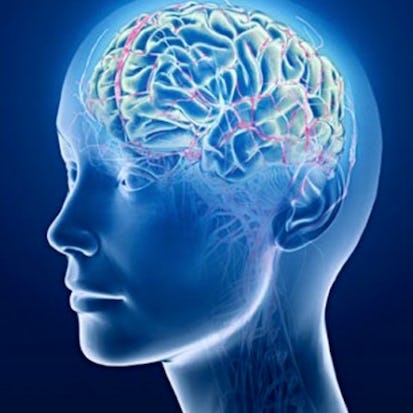- Level Foundation
- المدة 10 ساعات hours
- الطبع بواسطة Duke University
-
Offered by

عن
This course is about how the brain creates our sense of spatial location from a variety of sensory and motor sources, and how this spatial sense in turn shapes our cognitive abilities. Knowing where things are is effortless. But "under the hood," your brain must figure out even the simplest of details about the world around you and your position in it. Recognizing your mother, finding your phone, going to the grocery store, playing the banjo " these require careful sleuthing and coordination across different sensory and motor domains. This course traces the brain's detective work to create this sense of space and argues that the brain's spatial focus permeates our cognitive abilities, affecting the way we think and remember. The material in this course is based on a book I've written for a general audience. The book is called "Making Space: How the Brain Knows Where Things Are", and is available from Amazon, Barnes and Noble, or directly from Harvard University Press. The course material overlaps with classes on perception or systems neuroscience, and can be taken either before or after such classes. Dr. Jennifer M. Groh, Ph.D. Professor Psychology & Neuroscience; Neurobiology Duke University www.duke.edu/~jmgroh Jennifer M. Groh is interested in how the brain process spatial information in different sensory systems, and how the brain's spatial codes influence other aspects of cognition. She is the author of a recent book entitled "Making Space: How the Brain Knows Where Things Are" (Harvard University Press, fall 2014). Much of her research concerns differences in how the visual and auditory systems encode location, and how vision influences hearing. Her laboratory has demonstrated that neurons in auditory brain regions are sometimes responsive not just to what we hear but also to what direction we are looking and what visual stimuli we can see. These surprising findings challenge the prevailing assumption that the brain's sensory pathways remain separate and distinct from each other at early stages, and suggest a mechanism for such multi-sensory interactions as lip-reading and ventriloquism (the capture of perceived sound location by a plausible nearby visual stimulus). Dr. Groh has been a professor at Duke University since 2006. She received her undergraduate degree in biology from Princeton University in 1988 before studying neuroscience at the University of Michigan (Master's, 1990), the University of Pennsylvania (Ph.D., 1993), and Stanford University (postdoctoral, 1994-1997). Dr. Groh has been teaching undergraduate classes on the neural basis of perception and memory for over fifteen years. She is presently a faculty member at the Center for Cognitive Neuroscience and the Duke Institute for Brain Sciences at Duke University. She also holds appointments in the Departments of Neurobiology and Psychology & Neuroscience at Duke. Dr. Groh's research has been supported by a variety of sources including the John S. Guggenheim Foundation, the National Institutes of Health, the National Science Foundation, and the Office of Naval Research Young Investigator Program, the McKnight Endowment Fund for Neuroscience, the John Merck Scholars Program, the EJLB Foundation, the Alfred P. Sloan Foundation, the Whitehall Foundation, and the National Organization for Hearing Research.الوحدات
Lesson 1
7
Videos
- Lecture 1.1 - (S) Introduction to the Course
- Lecture 1.2 - (S) Vision: What Do We See?
- Lecture 1.3 - (S) Vision: How Light is Sensed by Neurons, Part 1
- Lecture 1.4 - (S) Vision: How Light is Sensed by Neurons, Part 2
- Lecture 1.5 - (S) Vision: How the Eye Forms an Image, Part 1
- Lecture 1.6 - (S) Vision: How the Eye Forms an Image, Part 2
- Lecture 1.7 - (E) Vision: Movie Interlude - Turning the World Upside-Down
5
Readings
- Getting Started
- Syllabus
- Grading and Logistics
- Philosophy
- Readings
Review
1
Assignment
- Module 1 Quiz
Lesson 2
9
Videos
- Lecture 2.1 - (S) Vision: Binocular Cues for Depth Perception
- Lecture 2.2 - (S) Vision: Monocular Cues for Depth Perception
- Lecture 2.3 - (S) Introduction to Body Position Sensing
- Lecture 2.4 - (S) Body Position Sensory Receptors
- Lecture 2.5 - (G) Neural Signals: The Resting Membrane Potential
- Lecture 2.6 - (G) Neural Signals: The Action Potential
- Lecture 2.7 - (S) Converting the Mechanical to the Electrical
- Lecture 2.8 - (E) Body Position Illusions and Experiments I: Pinocchio and Crossed Hands
- Lecture 2.9 - (E) Body Position Illusions and Experiments II: Prisms
Review
1
Assignment
- Module 2 Quiz
Lesson 3
6
Videos
- Lecture 3.1 - (S) Introduction: Figures and Backgrounds
- Lecture 3.2 - (S, G, E) Synapses and Center-Surround Organization
- Lecture 3.3 - (S) Maps of Visual Space
- Lecture 3.4 - (S) Orientation and Border Ownership
- Lecture 3.5 - (S, E) Phantom Limb and the Blind Spot
- Lecture 3.6 - (S, E) Motion Vision
Review
1
Assignment
- Module 3 Quiz
Lesson 4
12
Videos
- Lecture 4.1 - (S) What is sound and how is it sensed?
- Lecture 4.2 - (S) Deducing the Location of Sounds
- Lecture 4.3 - (S) Movements and the "Cone of Confusion"
- Lecture 4.4 - (S) Spectral Cues and the "Cone of Confusion"
- Lecture 4.5 - (S) Learning to Find Sounds
- Lecture 4.6 - (S, E) Ventriloquism and Finding Sounds
- Lecture 4.7 - (S) Determining the Distance of Sounds
- Lecture 4.8 - (S) Brain Maps as Representations
- Lecture 4.9 - (S) Brain Meters as Representations
- Lecture 4.10 -(S) Brain Meters and Movements
- Lecture 4.11 -(S, E) Translating Maps to Meters
- Lecture 4.12 - (S, E) Brain Representations for Sound
Review
2
Assignment
- Module 4 Quiz - Part I
- Module 4 Quiz - Part II
Lesson 5
8
Videos
- Lecture 5.1 - (S) Defining Spatial Locations
- Lecture 5.2 - (S) Visual Space is Synthesized Across Eye Movements
- Lecture 5.3 - (S, E) Sensing Eye Position via Motor Commands
- Lecture 5.4 - (S, E) Coordinating Between Vision and Touch
- Lecture 5.5 - (S, E) Coordinating Between Vision and Hearing
- Lecture 5.6 - (S, E) Translating Auditory Information into Visual Coordinates
- Lecture 5.7 - (S) Going Places I: The Vestibular System
- Lecture 5.8 - (S) Going Places II: Vision and Movement
Review
1
Assignment
- Module 5 Quiz
Lesson 6
9
Videos
- Lecture 6.1 - (S) Memory and Space: A Two-Way Street
- Lecture 6.2 - (S) Memory in Neural Activity
- Lecture 6.3 - (S) Memory in Synapses
- Lecture 6.4 - (S, E) Memory and Parietal Cortex
- Lecture 6.5 - (S, E) Memory, Navigation and the Hippocampus
- Lecture 6.6 - (S) Space and Thinking
- Lecture 6.7 - (S, E) Behavioral Ties Between Space and Thought
- Lecture 6.8 - (S, E) Brain Evidence Connecting Space and Thought
- Lecture 6.9 - (S) Space and Abstract Thought
Review
1
Assignment
- Module 6 Quiz
Auto Summary
**Course Overview: The Brain and Space** Delve into the fascinating world of neuroscience with "The Brain and Space," a comprehensive course designed to unravel how our brain constructs a sense of spatial location from various sensory and motor inputs. Led by Dr. Jennifer M. Groh, a distinguished professor at Duke University, this course explores the intricate processes through which our brains recognize and interact with the environment around us, and how this spatial awareness influences our cognitive functions. Dr. Groh, an expert in the field with extensive research on how different sensory systems, particularly visual and auditory, encode spatial information, brings her wealth of knowledge to this engaging course. Her research has shown that the brain’s sensory pathways are interconnected, revealing surprising insights into multi-sensory integration, such as how visual stimuli can affect auditory perception. This foundational course, based on Dr. Groh's acclaimed book "Making Space: How the Brain Knows Where Things Are," provides learners with an in-depth understanding of the brain's spatial processing capabilities. The content is suitable for those interested in perception or systems neuroscience and can be taken either before or after related classes. Offered through Coursera, the course spans approximately 600 minutes and is available through various subscription options, including Starter, Professional, and Paid plans. It caters to a diverse audience, from curious minds eager to understand the neural basis of spatial awareness to professionals seeking to enhance their knowledge in neuroscience and cognitive science. Join Dr. Groh and explore the brain’s remarkable ability to create a sense of space, shaping the way we think, remember, and interact with the world. Enroll now to uncover the mysteries of the brain and its spatial codes!

Dr. Jennifer M. Groh, Ph.D.


